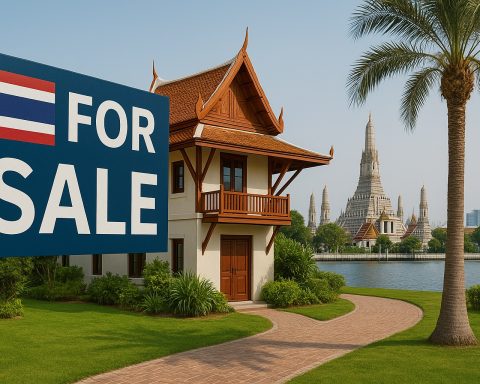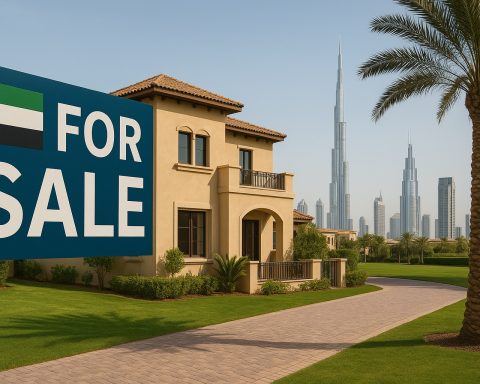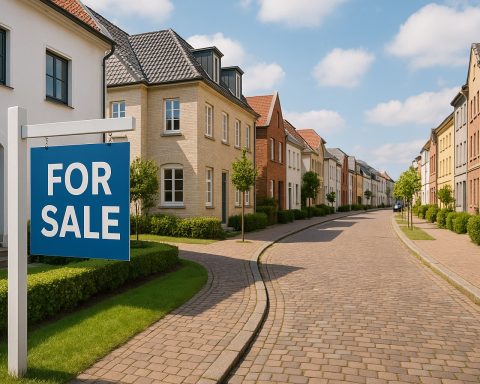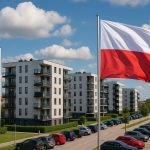Overview (2025): Dubai’s real estate sector entered 2025 on a strong footing. The emirate’s population now exceeds 3.8 million (+5% YoY), with 18.7 million overnight tourists visiting in 2024 (+9%) deloitte.com. GDP grew ~3.2% in 2024 (AED 231 billion) deloitte.com. Dubai’s “preferred safe haven” status has sustained high investor confidence deloitte.com globalpropertyguide.com. Indeed, 2024 saw record activity: ~181,000 property transactions (all sectors) – +36.5% year-on-year globalpropertyguide.com – valued at roughly AED 522.5 billion. Prices have climbed sharply: for example, a recent report shows 2024 prices up +11.6% (residential) and +13.2% (commercial) over 2023 digitaldubai.ae. This boom has been driven by strong demand from both locals and foreigners, aided by robust tourism and business growth globalpropertyguide.com globalpropertyguide.com.
Dubai’s real estate market remains robust in 2025, bolstered by population growth, rising tourism and strong economic fundamentals deloitte.com. These factors underlie the recent surge in transaction volumes and prices globalpropertyguide.com digitaldubai.ae.
Residential Sector (2025)
Demand for housing is at historic highs. By Q4 2024, residential sales prices were ~20% above their year-ago level, and rents ~19% higher deloitte.com. Both apartment and villa segments saw double-digit gains: for instance, a Dubai price index was +19.5% YoY in Nov 2024 globalpropertyguide.com (apartments +19.4%, villas +20.3% globalpropertyguide.com). Villas have led the rise, reflecting their relative scarcity; rents and yields rose in tandem with sales prices. Gross rental yields remain attractive – around 6.97% overall (Nov 2024) globalpropertyguide.com.
The market is also characterized by a boom in off-plan sales. In 2024 there were ~109,500 off-plan deals – up 60.6% over 2023 globalpropertyguide.com – indicating that buyers are aggressively locking in pre-completions. New supply is significant but tapering after mid-decade (see table below). In 2024 JLL estimates ~38,500 new homes were delivered (down slightly from 39,000 in 2023), bringing total housing stock to ~757,500 units globalpropertyguide.com. Much of this pipeline is concentrated in large communities (e.g. Dubailand, Jumeirah Village, MBR City). Over the next few years, analysts project very high handovers: for example, one report forecasts ~27,000 completions in 2024, jumping to ~41,000 in 2025 and 42,000 in 2026, before falling sharply (to ~19,000 in 2027 and ~1,000 by 2029) dxbinteract.com.
| Year | Projected New Units |
|---|---|
| 2024 | 27,000 (estimate) |
| 2025 | 41,000 |
| 2026 | 42,000 |
| 2027 | 19,000 |
| 2028 | 12,000 |
| 2029 | 1,000 |
Table: Forecast residential completions (Source: market analysis dxbinteract.com).
These supply additions should meet the surge in demand. Transactions are broad-based: in Q1–Q3 2024 there were ~102,800 apartment sales (+40% YoY) and 22,900 villa/townhouse sales (+18% YoY) globalpropertyguide.com. The market is well-balanced at present, but the late-2025/2026 period – when deliveries peak – will test this. Importantly, Dubai’s stock of high-end, low-density homes remains limited; prime villa and waterfront segments continue to see particularly strong demand and price growth deloitte.com expertbridge.ae.
Foreign Buyer Profile
International buyers dominate the upscale segment. Recent data show the top nationalities of foreign residential investors in 2025 are: Indians (22%), Britons (17%), Chinese (14%), Saudis (11%), and Russians (9%) dxbinteract.com. These shares have been inching up: e.g. Indians grew from 21% to 22% of foreign purchases year-on-year dxbinteract.com. Key drivers include currency benefits (e.g. India’s rupee weakness), regional proximity (India, Saudi), and visa-linked ownership (e.g. Chinese buyers seeking Golden Visas) dxbinteract.com dxbinteract.com. UK investors (17%) are attracted by high yields and ease of travel dxbinteract.com. The overall share held by Gulf Arabs has also risen (notably Saudis) due to strong ties and dual citizenship ease dxbinteract.com. In sum, Dubai’s resident-expat housing market is now largely driven by these foreign groups, alongside well-heeled locals and new professionals from around the world globalpropertyguide.com dxbinteract.com.
Commercial Sector (2025)
The office, retail, hospitality and logistics segments also performed well in 2024–25. Offices: Prime rents in top areas like Downtown and DIFC have been rising – Deloitte reports a 17% rent increase in 2024 vs 2023 deloitte.com. Demand persists for Grade-A space (particularly from finance and professional services), though hybrid work is tempering overall space needs. Vacancy in secondary offices remains elevated. Retail: The recovery in tourism and consumer spending has buoyed retail. Dubai 2040’s masterplan explicitly calls for more community retail hubs near residences deloitte.com. Retail sales are projected to grow ~6% per year through 2027 deloitte.com. Tourist-driven retail (Malls, Dubai Mall, Mall of the Emirates) is near capacity, and new neighborhood centers are being planned. Hospitality: Hotel and leisure came back strongly post-Expo, with 2024 international visitors at record levels. Dubai set new highs in occupancy and RevPAR in late 2024 (supported by Expo, global events and new hotel openings). Industrial/Logistics: Dubai’s warehousing and logistics zones (JAFZA, Dubai South, Dubai Industrial Park) remain very tight. Strong trade and e-commerce volumes underpin growth. Rents in key industrial parks are among the highest in the region, and new logistics projects (ports, free zones) are expanding. One report notes the logistics sector aims to reach AED 200 billion by 2030 globenewswire.com, implying large demand for related space.
Overall, all sectors are growing: the government projects Dubai’s construction industry +4.2% in 2025 (4% yearly to 2029), driven by transportation, energy and housing projects globenewswire.com. Notably, Dubai has approved a AED 16 billion (USD 4.4 billion) 2024–27 Main Roads Development Plan, covering 22 projects (including 634 km of new/expanded roads) globenewswire.com. In late 2024 it also approved a AED 3.7 billion roads package (21 projects over 2025–29). These will improve connectivity to new communities. Infrastructure investment is a key driver: for example, in Jan 2025 RTA awarded a AED 1.5 billion contract for Al Fay Street development (major roads/intersections) globenewswire.com.
The iconic Burj Khalifa (Downtown Dubai) exemplifies the high-end office/hospitality stock in central Dubai. The government’s expansion of transportation infrastructure and new hubs (e.g. Al Maktoum Airport) is intended to spread growth across the emirate thenationalnews.com globenewswire.com.
Pricing Trends & Supply-Demand Dynamics
Price Trajectory: After the mid-2010s correction, Dubai prices have surged since 2022. Over 2022–H1 2025, residential prices climbed by roughly +60% khaleejtimes.com. Annual growth slowed slightly in late 2024, but remained double-digit: e.g. +19.5% YoY in Nov 2024 globalpropertyguide.com. Average sale prices in Q4 2024 were ~20% above Q4 2023 globalpropertyguide.com. DLD’s Real Estate Index (Q4 2024) confirms this robust pace digitaldubai.ae. Secondary (ready) and off-plan segments both saw strong gains, though most appreciation is in new projects and modern communities. Rents: Rents have rebounded in parallel – Knight Frank and local brokers report y-o-y apartment rent gains approaching 20% in prime areas. Gross rental yields (annual rent/price) are still high by global standards (~7%) globalpropertyguide.com, though down from their 2021 peaks.
Transactions: The number of sales transactions is at an all-time high. For 2024 as a whole, there were ~181k total property deals (all types) globalpropertyguide.com. Off-plan contracts have dominated new sales: ~109,527 off-plan deals in 2024 (a 60.6% jump) globalpropertyguide.com. Secondary market (re-sale) activity also remains healthy, reflecting both end-user and investor demand. Notably, apartment sales in Jan–Sep 2024 reached ~102,800 units (+40%) and villa/townhouse ~22,900 units (+18%) globalpropertyguide.com.
Supply: Construction activity is high but manageable. As noted, completions hit ~38–39k units per year in 2020–24 globalpropertyguide.com. Looking ahead, analysts forecast a one-time jump mid-decade: roughly 80,000–83,000 units in 2025–26 combined dxbinteract.com. After 2026, deliveries drop sharply (to ~19k in 2027 and ~1k by 2029 dxbinteract.com). Table above shows one industry forecast of this pattern. In short, while demand is strong, the projected supply surge in 2025–26 will be a key factor in the market.
Major Infrastructure & Development Projects
Dubai’s real estate outlook is closely tied to its mega-projects and master plans. Chief among these is the Al Maktoum International Airport (DWC) expansion at Dubai South. This ~$35 billion project will, in its first phase (by 2032), handle 150 million passengers/year, eventually scaling to 260 million thenationalnews.com thenationalnews.com. Contracts for new runways, terminals, people movers and other systems are underway thenationalnews.com. The DWC expansion is explicitly tied to accommodating ~1 million people with jobs and housing around Dubai South thenationalnews.com. As the airport grows, it will “unlock” massive development: authorities plan to closeovercrowded Dubai International Airport (DXB) and repurpose the 11 square km Al Garhoud site for new urban development thenationalnews.com. In effect, Dubai is creating a new city hub (Dubai South) around DWC. This is expected to generate huge demand for housing, logistics parks, hotels and retail in that zone thenationalnews.com thenationalnews.com.
Beyond airports, Dubai continues to invest in transport and urban infrastructure. The Roads & Transport Authority is implementing dozens of projects: for example, a AED 1.5 billion contract was awarded in 2025 to overhaul Al Fay Street (adding 13.5 km of new bridges/roads) globenewswire.com. Overall, the government has launched multi-billion-dirham road plans (22 projects over 2024–27) covering 634 km of roads globenewswire.com. These connect new residential areas (Dubailand, Arabian Ranches II, etc.) and ease commutes, enhancing the value of outlying communities. Public transit is also expanding (e.g. Metro extensions to Expo City, tram expansions).
Another focal point is Dubai’s 2040 Urban Master Plan. Launched by Sheikh Mohammed, it guides development around five main urban centres with integrated housing, parks and services khaleejtimes.com. A key goal is sustainable living: 60% of city area will be nature reserves, 30% public parks, and daily amenities within 5–10 minutes of residents. In practice, this means new neighborhood retail and community centers (ease daily life) deloitte.com. For instance, one objective is to have local retail at ground level in all residential hubs deloitte.com. By linking land use to transit, the 2040 plan is reshaping where developers focus – more emphasis on suburban, mixed-use projects.
Other notable projects include the District 2020 (redevelopment of the Expo 2020 site into a mixed-use tech and innovation zone), the ongoing MBR City and Dubai Creek Harbour, and mega-malls (Cityland Mall under construction). Each of these brings new residential and commercial stock. In industrial real estate, the expansion of ports (Jebel Ali, Al Hamriya) and free zones (Dubai South logistics zone) continues apace. Overall, Dubai’s pipeline of infrastructure and development is one of the largest globally, and it directly underpins future real estate demand in those corridors thenationalnews.com globenewswire.com.
Government Policies, Regulations & Visa Reforms
Dubai’s authorities have maintained a relatively open property investment regime while adding safeguards. In recent years the Dubai Land Department (DLD) has taken measures to moderate speculation: for example, it doubled the registration fee to 4% of the property value (from 2%) globalpropertyguide.com. A 5% VAT applies to residential sales (exemptions for new off-plan projects up to three years old) globalpropertyguide.com. Meanwhile, escrow laws (mandatory trust accounts for all new off-plan developments) have greatly enhanced buyer protection, and a 20-year mortgage cap still applies to regulate household borrowing. These policies have fostered more transparency and slower credit growth in real estate.
On the incentives side, Dubai has leveraged visa reforms to boost demand. Most prominently, Golden Visas now offer 10-year residency to foreign property investors (for example, owning ≥AED 2 million in real estate) redubai.com. A 3-year investor visa (AED 750k+) also exists for mid-tier buyers. Other visa categories – including the 5-year multiple-entry tourist visa, the 5-year remote-work visa, and a 5-year freelancer visa – have broadened the pool of potential tenants and owners redubai.com redubai.com. Even the new retirement visa (for over-55s) is drawing buyers into tranquil communities redubai.com. In short, Dubai’s immigration policy now strongly aligns with real estate: ownership (especially freehold property) grants easier residency, which in turn drives demand for homes and rentals redubai.com redubai.com.
Overall, these policies balance cooling measures (higher fees, VAT) with growth incentives (visas, infrastructure). The market is also aided by stable regulations: foreigners can hold freehold titles in designated zones, there are no property taxes, and rental rules under the RERA act protect both landlords and tenants. All these factors continue to make Dubai’s real estate attractive relative to other global cities.
Foreign Investment Trends & Opportunities
Foreign capital remains a cornerstone of Dubai’s market. According to DLD data and analysts’ estimates, international investors account for a large share of sales volume (often cited at 70–90%). The aforementioned top-five nationalities illustrate this diversity dxbinteract.com. Beyond nationality, the profile of investors varies by segment: for example, ultra-high-net-worth individuals (UHNWI) often target trophy properties (Palm Jumeirah villas, waterfront apartments), while professionals and middle-class expats buy or rent mid-market homes. Many cite Dubai’s high yields (with typical gross yields ~7%) and tax-free environment as key attractions globalpropertyguide.com. The Crown Prince of Dubai has noted that global confidence in the emirate’s economy – due to its infrastructure, regulatory environment and quality of life – continues to bring in foreign investment globalpropertyguide.com.
Opportunity areas include luxury residential (especially by foreign investors seeking safety and income), retail assets(especially in growing suburbs), and logistics/warehousing (with UAE’s push to be a trade hub). Some funds and REITs are increasingly eyeing Dubai assets, given the pro-investment legal framework. The UAE’s National Investment Strategy 2031 explicitly aims to double FDI by 2031 (to AED 1.3 trillion) globenewswire.com, with real estate and logistics among target sectors. In practice, this could mean more sovereign wealth and pension funds allocating to Dubai property and development projects, further fueling growth.
Outlook & 2026–2030 Forecast
Looking out to 2026–2030, analysts foresee continued growth but with moderation and some potential volatility. The key issue is the supply surge now underway. According to Fitch Ratings, the spike in handovers – expected to outstrip population growth (projected 5% per year) khaleejtimes.com – will likely stall the current price upswing. Fitch sees Dubai’s market peaking in 2024, with a mild correction (up to ~15%) in late 2025 or 2026 under its base case khaleejtimes.com. This reflects the fact that deliveries (cumulative ~250k units by 2027) could temporarily exceed demand khaleejtimes.com. Fitch notes, for example, that ~120,000 units are slated for handover in 2026 alone khaleejtimes.com.
That said, other experts point out offsetting factors. Recent analyses highlight that Dubai’s population growth and investment inflows may exceed 5% per year (particularly if HNWIs and skilled workers continue to arrive) expertbridge.ae. In this view, much of the new supply could be absorbed by new residents, such that any price dip is limited to specific segments. Indeed, prime locations (villas, waterfronts) have their own demand dynamics and could remain resilient expertbridge.ae. Early 2025 data (transaction volumes, rent levels) suggest the market still has momentum, implying at least a soft landing rather than a hard crash.
Assuming no severe global shock, we expect Dubai residential prices to level off or slow in 2026–27. Some moderate declines (single-digit) are possible in mid-2025/26 if interest rates rise or buyers pause. By 2028–30, as supply growth flattens (per the DXBInteract projection) and population continues rising, the market should stabilize and resume modest growth. Demand growth areas likely include newly developed suburbs (Dubai South, Al Furjan, DAMAC Hills 2, JVC, MBR City) and luxury districts (Palm, JBR, Mohammed bin Rashid City) expertbridge.ae. On the upside, further government initiatives (tech zone incentives, green energy projects) could create new job clusters, supporting demand. On the risk side, factors to watch include any slowdown in foreign investment (from geopolitical tensions or higher global rates) and oversupply in lower-end apartments.
In summary, Dubai’s real estate is expected to keep growing through 2030, albeit at a more moderate pace post-2025. Price/rent growth will likely range in the mid-to-high single digits annually in the second half of the decade. The long-term fundamentals (population, tourism growth, economic diversification) remain positive. However, cyclical supply peaks and global economic factors will introduce intermittent corrections. Savvy investors will therefore focus on prime assets, developments with strong developers, and projects aligned with Dubai’s 2040 vision and infrastructure nodes.
Sources: Official and industry sources as cited (Dubai Land Department, Deloitte, JLL, Knight Frank, industry analyses and press) deloitte.com digitaldubai.ae globalpropertyguide.com globalpropertyguide.com globenewswire.com thenationalnews.com globalpropertyguide.com khaleejtimes.com khaleejtimes.com expertbridge.ae.












